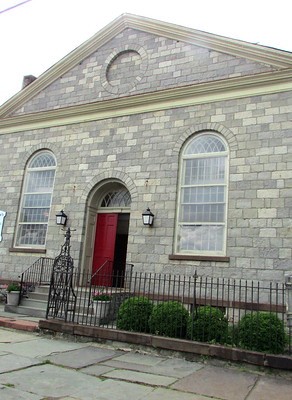
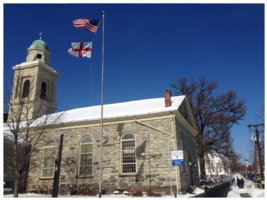
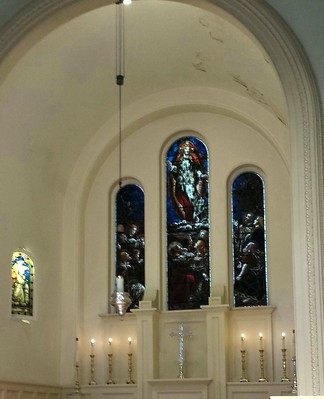
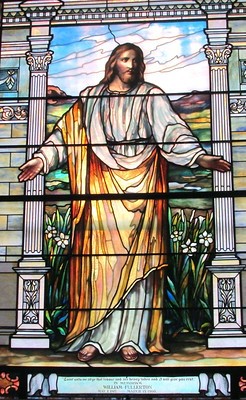
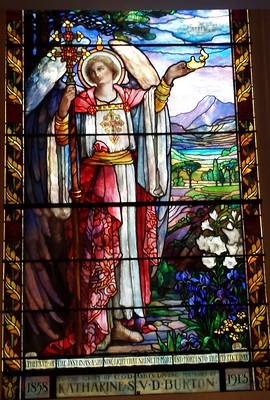
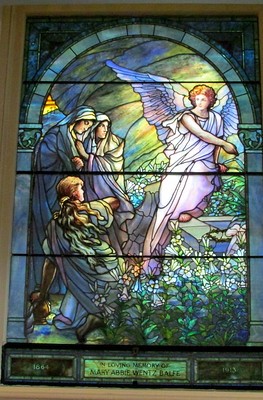
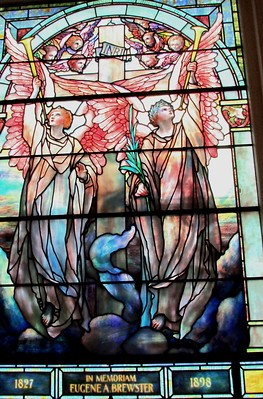
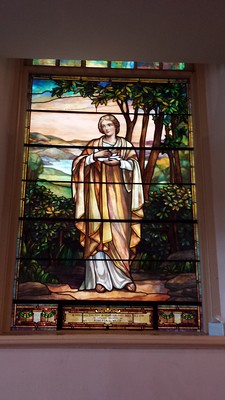
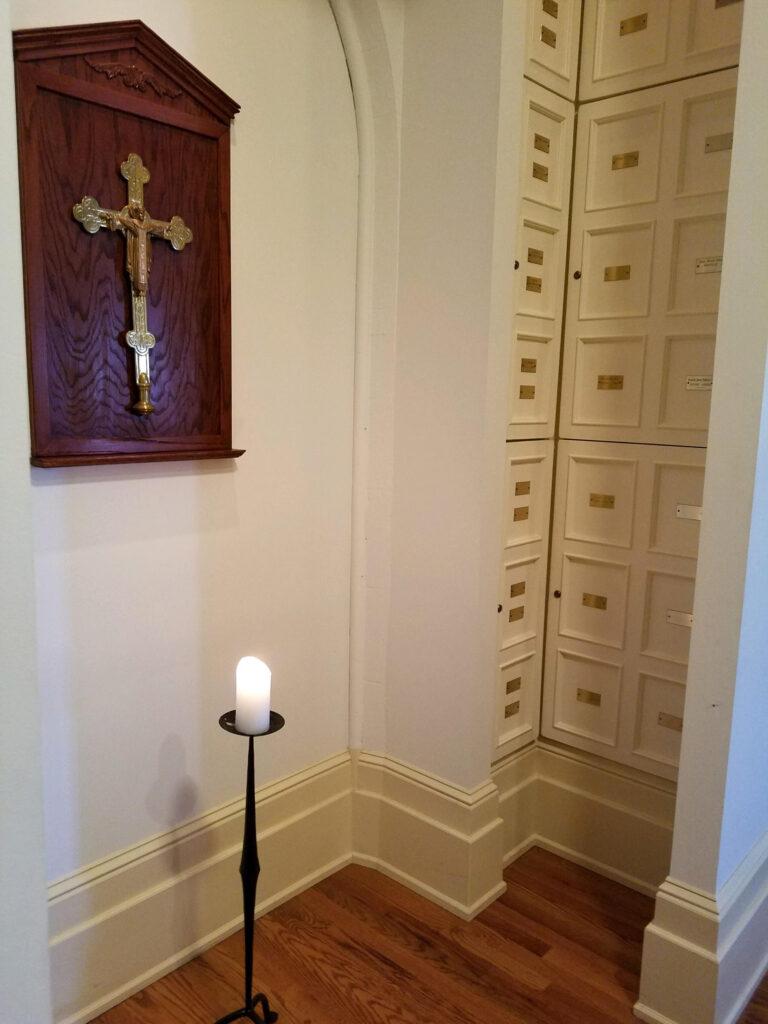
St. George’s Federal-style square building with clear glass windows was completed and consecrated in 1819. Today the four windows closest to Grand Street are the clear originals. The iron fence shown here was purchased from Trinity Church in New York City. In 1835 the sanctuary was enlarged and the bell tower was added. The bell was installed in 1836 and a new one was added in 1849.
As you enter and look down the center aisle of the nave, you see the reredos behind the altar, brought to life by the stained glass triptych of Jesus’ ascension, and flanked by stained glass angel windows on each side. The silver sanctuary vigil lamp burns continuously – with the exception of Good Friday – to show the presence of Christ in the symbols of the consecrated bread and wine of the Last Supper.
The rest of the nave is infused with the light that streams through the five jewel-toned and opalescent stained glass windows, two of which are attributed to the Tiffany Studio. Restored in 1998, their colors are now as vivid as they were when they were installed over a century ago.
The Chapel of St. Paul, located between the main sanctuary and the John Brown fellowship room, is adorned with more stained glass windows depicting Christ the King and a number of saints. They were a gift to St. George’s from the former St. Paul’s Church, which had been located two blocks north on Grand Street.
In 1966, two crystal chandeliers were added to the sanctuary ceiling and a new Gress-Miles organ was installed in the east gallery. The organ contains 19 voices, 27 ranks and 1552 pedals. A Baldwin piano also complements worship and public concerts made popular by St. George’s excellent acoustics.
The Columbarium, which offers a sacred final resting place for cremains of loved ones, is the newest addition to St. George’s building. It is appropriately located just beyond the baptismal font where so many have begun their spiritual journeys.
